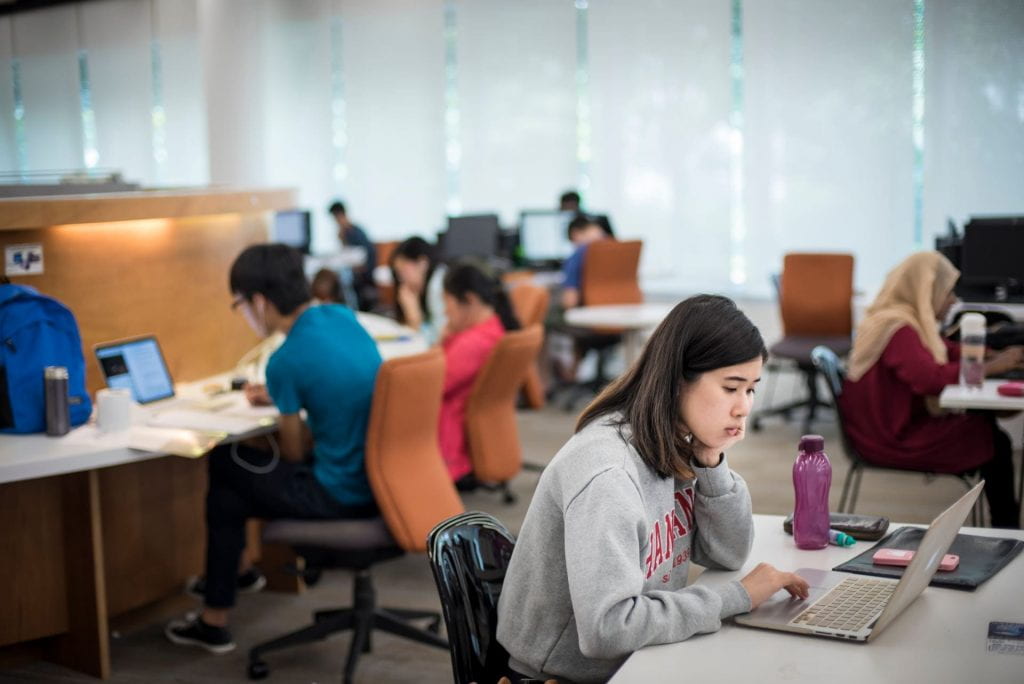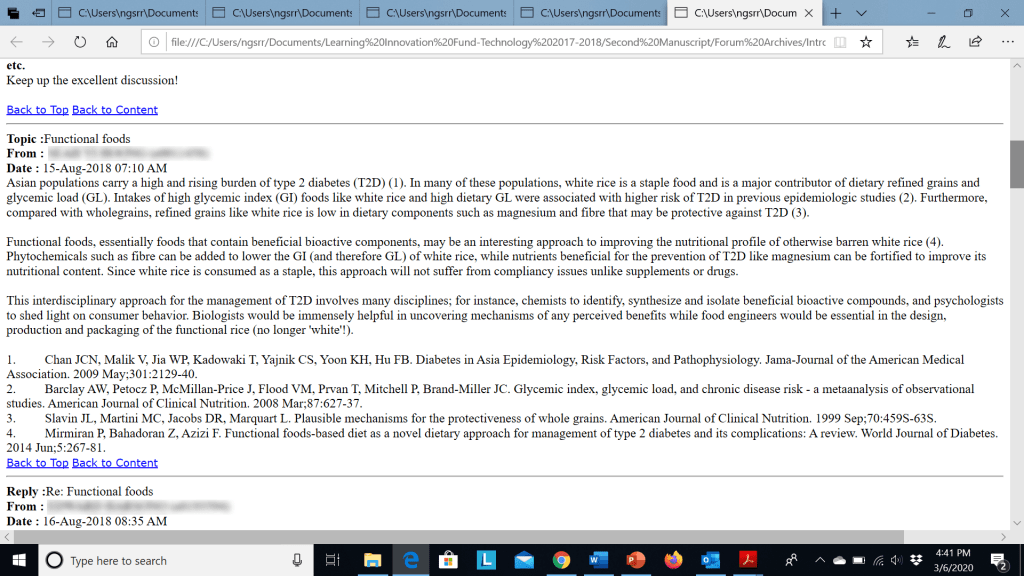Rafi RASHID
NUS Graduate School for Integrative Sciences and Engineering (NGS)
Rafi discusses the learning activities he developed to enhance student engagement during online discussions, referencing the Community of Inquiry (CoI) framework.

When I introduced blended learning into one of my modules in 2018, I was disappointed that the online forum discussions were not as effective as I had hoped. Despite providing my students with detailed instructions and explicit question prompts, I was disappointed to see that participation was lacklustre. Apparently, students did not like the IVLE-based forum because they felt that it was not user-friendly and they found instant messaging applications like WhatsApp to be more convenient. I turned to the literature on collaborative discussion in search of a remedy.
I came across a research article about promoting interdisciplinary collaboration by means of questions designed to elicit collaborating researchers’ views on the philosophical aspects of research. These questions were dubbed the “Toolbox Project” (Eigenbrode et al., 2007). I found this article quite relevant because my own class comprised students from various STEM disciplines, instead of a single discipline. The above article inspired me to introduce an in-class activity that would warm up my students for online discussions.
I shared the idea with Kiruthika Ragupathi (Centre for the Development of Teaching and Learning), who proposed using some of the original Toolbox questions as a basis for constructing new questions that students would answer face-to-face prior to engaging each other online. We felt that the Community of Inquiry (CoI) framework (Vaughan, Cleveland-Innes, & Garrison, 2013) would help us devise questions to trigger cognitive presence in a blended learning context.
I decided to structure the lecture into three parts: pre-lecture, during the lecture, and post-lecture.
Prior to lecture, students were individually asked to (i) compare and contrast science and engineering, (ii) briefly describe their own discipline, (iii) characterise their research as basic or applied, and (iv) attempt to define the term “interdisciplinary”. We felt that these questions were quite relevant because each class group would usually be a mix of scientists and engineers.
During the lecture, students would share their answers with each other face-to-face in their respective groups.
Post lecture, group members would collaborate to choose a real-world problem, propose an interdisciplinary approach to solve it, and summarise their work in a 2-page report. This report had to be based on discussions carried out in the discussion forum.

As observed in Figure 1, students used their respective disciplinary perspectives to address the problem, utilising the discussion forum. The four Toolbox Project-based questions that students addressed during class helped to set the stage for subsequent online discussions. First, students proposed complex problems necessitating an interdisciplinary approach, for example sensory feedback challenges with prosthetic devices and functional foods to help with management of Type 2 diabetes. Next, they suggested how their respective disciplines (e.g. biology/life sciences, chemistry, chemical engineering, computer science, and materials science) would be relevant to their proposed solutions. These discussions lasted for 2 weeks and culminated in integrated solutions to the above problems.
I was happy to see that the warm-up exercise was bearing fruit on the forums. Not only were students suggesting how their own disciplines might contribute to the project, some students also went a step further to suggest how other students’ disciplines might contribute too.

This implies that our questions were helping them to understand disciplines that were different from their own. As a result, they were able to articulate ideas from various disciplinary standpoints, select and integrate the most relevant ones, and eventually synthesise a solution that they could report. In short, in achieving a deeper understanding of their own discipline and recognising the relevance of other disciplines, the students were able to appreciate the value of interdisciplinary collaborations in addressing complex problems and thus achieve one of the module’s learning objectives.
The above observations suggest that marrying the concept of philosophical dialogue with the CoI framework yields a strategy that builds cognitive presence. I am encouraged by these results to refine and test the strategy further.
 |
Rafi RASHID has been Assistant Director for Programmes and Lecturer at the NUS Graduate School for Integrative Sciences & Engineering (NGS) since 2016. During his PhD and postdoctoral years, he was fortunate enough to work on interdisciplinary research projects involving multiple collaborations. As a member of the NGS faculty, he teaches modules related to integrative sciences and engineering, research ethics and scientific integrity, and scientific communication. He also pursues research in the area of teaching and learning where one of his current interests involves putting the “Philosophy” back into the “Doctor of Philosophy”. His other passion is using technology to enhance teaching and learning, and he has been progressively implementing blended learning in the courses that he teaches. He has recently embarked on an ambitious project to develop a Massive Open Online Course (MOOC) on the theme of “Microbiomes & Sustainability”. Rafi can be reached at ngsrr@nus.edu.sg. |
References
Eigenbrode, S. D., O’Rourke, M., Wulfhorst, J. D., Althoff, D. M., Goldberg, C. S. Merrill, K., … Bosque-Pérez, N. A. (2007). Employing philosophical dialogue in collaborative science. BioScience, 57(1), 55-64. http://dx.doi.org/10.1641/B570109
Vaughan, N., Cleveland-Innes, M., & Garrison, D. (2013). Teaching in blended learning environments: Creating and sustaining communities of inquiry. Edmonton: AU Press.

